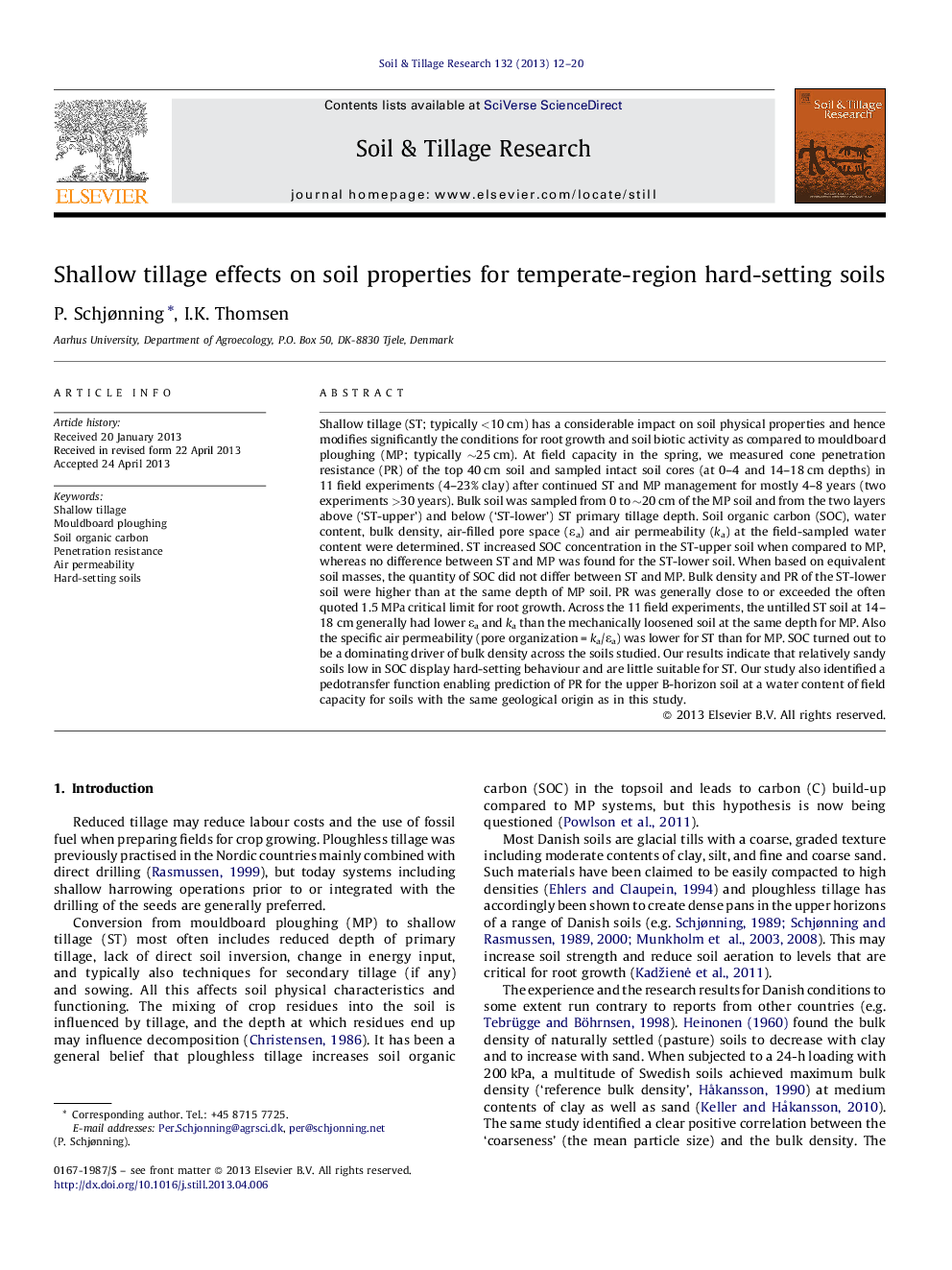| Article ID | Journal | Published Year | Pages | File Type |
|---|---|---|---|---|
| 305849 | Soil and Tillage Research | 2013 | 9 Pages |
•We examined 11 sandy loam soils for shallow tillage (ST) effects on soil properties.•ST affected soil organic carbon (SOC) concentration but not the quantity for equivalent soil masses.•Soil below ST depth had critical conditions for root growth.•Soil bulk density correlated to SOC rather than soil texture.•Penetration resistance for B-horizon soil could be predicted from texture characteristics.
Shallow tillage (ST; typically <10 cm) has a considerable impact on soil physical properties and hence modifies significantly the conditions for root growth and soil biotic activity as compared to mouldboard ploughing (MP; typically ∼25 cm). At field capacity in the spring, we measured cone penetration resistance (PR) of the top 40 cm soil and sampled intact soil cores (at 0–4 and 14–18 cm depths) in 11 field experiments (4–23% clay) after continued ST and MP management for mostly 4–8 years (two experiments >30 years). Bulk soil was sampled from 0 to ∼20 cm of the MP soil and from the two layers above (‘ST-upper’) and below (‘ST-lower’) ST primary tillage depth. Soil organic carbon (SOC), water content, bulk density, air-filled pore space (ɛa) and air permeability (ka) at the field-sampled water content were determined. ST increased SOC concentration in the ST-upper soil when compared to MP, whereas no difference between ST and MP was found for the ST-lower soil. When based on equivalent soil masses, the quantity of SOC did not differ between ST and MP. Bulk density and PR of the ST-lower soil were higher than at the same depth of MP soil. PR was generally close to or exceeded the often quoted 1.5 MPa critical limit for root growth. Across the 11 field experiments, the untilled ST soil at 14–18 cm generally had lower ɛa and ka than the mechanically loosened soil at the same depth for MP. Also the specific air permeability (pore organization = ka/ɛa) was lower for ST than for MP. SOC turned out to be a dominating driver of bulk density across the soils studied. Our results indicate that relatively sandy soils low in SOC display hard-setting behaviour and are little suitable for ST. Our study also identified a pedotransfer function enabling prediction of PR for the upper B-horizon soil at a water content of field capacity for soils with the same geological origin as in this study.
